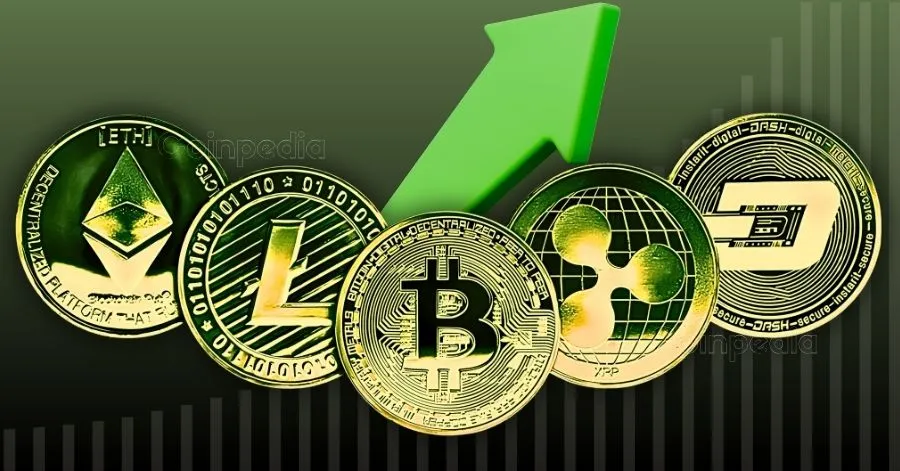TLDR
- US stock futures plunged Sunday, following $5.4 trillion in market losses last week
- Trump’s universal tariff took effect Saturday, with higher “reciprocal” tariffs coming Wednesday
- China announced 34% tariffs on all US goods in retaliation
- Oil fell below $60 per barrel as recession fears grow
- Bitcoin dropped to $78,736, down from over $100,000 post-election
The shockwave from President Donald Trump’s massive tariff announcement continued to rattle global markets on Sunday evening, as US stock futures pointed to another day of steep losses when trading opens Monday morning. This follows the worst two-day stretch for stocks in five years, which already wiped out over $5.4 trillion in market value.
Futures trading Sunday evening painted a grim picture. Dow futures fell 1,250 points, or 3.3%. S&P 500 futures dropped 3.7%, while tech-heavy Nasdaq futures tumbled 4.6%.
Asian markets opened to what traders described as a “bloodbath.” Japan’s Nikkei fell 8% at the open, triggering circuit breakers that temporarily halted trading. Hong Kong’s Hang Seng Index plunged 13% in one of its biggest single-day falls ever.
European markets followed the downward trend. The Stoxx 600, FTSE 100, Germany’s DAX, and French and Italian markets all dropped around 5%.
Tariff Implementation Timeline
The universal tariff that sparked the market panic went into effect Saturday after Trump signed an executive order earlier in the week. This baseline tax applies to all imports entering the United States.
On Wednesday, much higher “reciprocal” tariffs will hit nearly 90 countries that have the largest trade imbalances with the US. For countries like China, these tariffs could reach as high as 79%.
China has already announced its countermeasures. Starting Thursday, China will impose a 34% tariff on all goods imported from the United States, escalating fears of a damaging trade war.
Commerce Secretary Howard Lutnick made the administration’s position clear on CBS’s “Face the Nation” Sunday: “The tariffs are coming. He announced it, and he wasn’t kidding. The tariffs are coming. Of course they are.”
Lutnick also shut down speculation about a potential delay, stating: “There is no postponing. They are definitely going to stay in place for days and weeks.”
Economic Impact Concerns
The price of US oil fell more than 3%, sinking below $60 per barrel for the first time since April 2021. This reflects investor fears that tariffs could push the global economy into a recession, reducing demand for fuel needed for transportation, travel, and shipping.
Bitcoin joined the widespread selloff, falling 5.6% to $78,736.93. This represents a steep drop from its post-election surge above $100,000, when crypto investors had hoped Trump would boost support for cryptocurrencies.
 Bitcoin Price on CoinGecko
Bitcoin Price on CoinGeckoJPMorgan analysts delivered a stark assessment last week. They estimated that Trump’s tariffs would increase taxes on Americans by $660 billion per year—the largest tax increase in recent memory. They predicted prices would surge, adding 2% to US inflation.
The nonpartisan Tax Foundation calculated that the average American household will pay $2,100 more per year for goods due to the tariffs. They projected America’s average import tax will jump to 19% this year from 2.5% last year—the highest rate since 1933.
According to the Tax Foundation, Americans’ after-tax incomes will decline 2.1% on average this year as a result of the tariffs.
JPMorgan raised its recession risk forecast to 60%, while Goldman Sachs increased its probability of a recession in the next 12 months to about 35%.
The Dow closed in correction territory Friday, down more than 10% from its December record high—the first time the index has closed in correction in more than three years. The Nasdaq closed in a bear market for the first time since 2022, down more than 20% from its December peak.
The S&P 500, which has fallen 17.4% since its all-time high on February 19, is set to open Monday in bear market territory—defined as a 20% decline from peak.
Federal Reserve Chair Jerome Powell acknowledged Friday that Trump’s tariffs, which were more aggressive than the central bank had expected, would drive prices higher and slow economic growth. Powell indicated the Fed was monitoring the situation but wasn’t rushing to act.
Trump has maintained a defiant stance throughout the market turmoil. On Truth Social Saturday, he wrote: “THIS IS AN ECONOMIC REVOLUTION, AND WE WILL WIN. HANG TOUGH. It won’t be easy, but the end result will be historic. We will, MAKE AMERICA GREAT AGAIN!!!”
On Sunday evening aboard Air Force One, Trump told reporters: “What’s going to happen with the market? I can’t tell you. But I can tell you, our country has gotten a lot stronger, and eventually it’ll be a country like no other.”
When asked specifically about addressing the market plunge, Trump said sometimes it was necessary to “take medicine” and that no deal would come with China unless the United States’ trade deficit was addressed.
The president indicated he has been fielding calls from tech executives and world leaders about the tariffs. “I’ve spoken to many countries. They all want to do just so you understand the power of what I’m doing. Every country is calling and being very solicitous, very, very nice and being very nice,” he said.
Trump stated he’s open to negotiations, particularly regarding the trade deficit with China and the European Union: “I do want to solve the deficit problem we have in China, with the European Union and other nations, and they’re going to have to do that. And if they want to talk about that, I’m open to talking.”
Some market analysts see potential buying opportunities emerging from the selloff. James Demmert, chief investment officer at Main Street Research, noted: “We are getting close to a bottom. The fact that stocks have dropped so much in these deep intraday moves is a clear sign of indiscriminate and fear-based selling. When this happens, we tend to soon see rallies.”
The post US Stock Futures Plunge as Trump Tariffs Trigger Global Market Selloff appeared first on Blockonomi.

 7 hours ago
22
7 hours ago
22








 English (US) ·
English (US) ·